
Installation Instructions for Furnace Humidifier
Plastic Models - Standard and Self-cleaning
Please read the instructions carefully before starting the installation.
Version 3 - June 2001
400 D / 800 D
M-300 / M-400
For future use, please copy the free help line number into the space below.
Free help line for technical assistance:
1-800-879-0123

WARNINGS AND DISCLAIMER
Installation Precautions
1) This humidifier will be connected to and used under water pressure and it must be installed in such a way that if a leak
occurs, the water could not cause any damage to the property. Make sure all water connections are properly installed or water
spill could occur.
2) This humidifier is intended for use on forced warm air circulation furnaces, as well as multi-fuel furnaces where temperature
does not exceed 180°F (82ºC). Higher temperatures will damage your humidifier and possibly cause overflow condition and
water damage to your home.
3) Do not install a humidifier where surrounding temperatures may be 32°F (0ºC) or colder. Freezing water will damage the
humidifier and burst the supply pipe, resulting in home damage.
4) Do not install the humidifier or the bypass connection directly on the furnace housing.
5) Do not install the humidifier or the bypass connection on a plenum side where a cooling coil could restrict or inhibit the
airflow through the humidifier.
6) Always check that you are not about to cut or drill into any air conditioning or electrical accessory during installation.
7) Do not install a humidifier on the supply duct where the static pressure exceeds 0.4” Water Column.
8) Do not install a humidifier if the city water pressure exceeds 90 psi. Check the local codes related to pressure reduction.
9) The installation, wiring and plumbing of the humidifier must comply with national and local electrical, plumbing and building
codes.
10) Electrical wiring and water tubing must not come into contact with sharp edges or hot surfaces. For the drainable models,
please make certain the drain tube has no bends, its end placed in a floor drain and there is no resistance to the flow of the
discharged water.
11) The transformer supplied is rated for 120 V power supply. Do not connect it to an installation supplied with another voltage.
12) Do not set the humidity level higher than normally recommended, or condensation damage could occur.
Safety Warnings
1) Please beware of sharp edges when you cut into a metal duct.
2) Always shut the power off before starting the installation. An electric shock from 120 volts could cause serious injury.
1. Required tooling
Tin snips, 3/32” drill, pliers, screwdrivers, electric drill, hammer, centre punch, medium sandpaper.
IMPORTANT NOTE: This humidifier is supplied with RECEX ® screws that allow the use of either a Robertson or Phillips
head screwdriver.
2. Typical installations (Please see Fig. 1)
There are two frequently encountered types of installations: LOWBOY furnace (1.1) and HI-BOY furnace (1.2).
3. Principles of operation
• This humidifier uses a motor driven evaporator pad. Warm air is by-passed from the warm air plenum and forced through
the evaporator pad while it turns in the water pan. Humid air is drawn back into the return duct.
BEFORE YOU START - GENERAL SAFETY AND INSTALLATION PRECAUTIONS
Please read and understand these instructions fully before you begin this installation and save them for future reference.
The manufacturer will assume no responsibility and the warranty will be void if the user does not adhere to the following precautions.
Self-cleaning model:
All instructions pertinent only to the self-cleaning model are shaded in the following text.
The drum contains all the small parts and installation hardware. It is closed by a round metal damper (10.B) that will be used
later in the installation process. Open the drum to remove all the parts, then re-assemble the drum without the damper.

4. Humidifier location (Please see Fig. 1, 2 and 3)
• This humidifier should be installed on the return duct (cold air). If for any reason you must install it on the supply duct, the
air pressure may lift the cover and you will have to attach it.
• Identify the return duct and choose the duct side, which offers the best access for installation and maintenance.
• The humidifier must be installed in such a way that if a leak occurs, the water could not cause any damage to the
property.
5. Preparing the humidifier
This humidifier is factory assembled with the air inlet located at the left side, thus the motor will be installed on the right side.
Everything is reversible, if necessary. However, if it is suitable as supplied, please go directly to Step 6 (Installing the
humidifier).
If humidifier reversal is necessary, do the following (please see Fig. 12)
Lift the front of the water pan to disengage it from the sides of the humidifier and slide it out of the unit.
• Remove the two screws (12.1) located at the top of the humidifier body.
• Open the two sides (12.2) of the humidifier.
• Bend the two sides in the opposite direction and finish with the top.
• Put the two screws (12.1) back in place, taking care to not strip the plastic material.
6. Installing the humidifier (Please see Fig. 2, 3 and 4)
• Please refer to the general view of a typical installation.
• Shut off the furnace power.
• Kit No. 1 contains all the material you need to install the humidifier body.
• Choose the location of the template and make sure that a distance of approximately 14” between the furthest left vertical
line of the humidifier opening and the centre of the air take-off collar can be obtained. (Please see Fig.2).
• This 14” dimension is given for a typical installation. Some installations may differ.
• Apply the humidifier template (#1) on the return duct, level it and then attach it to the duct.
• Starting from the vertical line of the opening (the one closest to the warm air duct), measure 14” and mark the centre of
the air take-off opening.
Warning: Always check that you are not about to cut or drill into any air conditioning or electrical accessory during
installation.
• Center punch the four screw holes and the four corner holes through the template and pierce the duct with a 3/32” drill.
• Remove the template. Join the four corner holes with a marker line. Make a starting hole and cut a rectangular opening
that will correspond to the back opening of the humidifier (7-3/4” x 6-1/2”).
• Install the humidifier in the opening and attach it with the four screws #8 x 3/4”. The ribs around the humidifier back
opening must fit into the rectangular opening in the duct. Check that the humidifier body is level from side to side and from
back to front. Then fasten the humidifier to the duct.
• Fasten the motor (4.1) to the opposite side of the air intake. Kit No. 5 contains the motor (4.1) and two screws (4.2).
7. Installing the air take-off collar (Please see Fig. 2 and 10)
• Center the air take-off collar on the point previously marked on the warm air duct.
• Hold the collar (2.3) on the duct and mark the four fastening holes and the inside zone of the collar.
WARNING: Always check that you are not about to cut or drill into any air conditioning or electrical accessory during
installation.
• Drill the four fastening holes (3/32” dia).
• Make a starting hole and cut a round opening for the air take-off collar.
• Fasten the air take-off collar to the duct with screw #1 while making sure that the air damper is installed between the collar
and the air duct. The hole on the outer edge of the air damper should line up with hole #1 of the take-off collar, and the
finger pull protrudes outward (Fig. 10A).
• Install screws #2 and #3.
• Close the opening to approximately 50%.
• Install screw #4 by piercing the damper, which will hold it in position.
Self-cleaning model:
Normally, when the warm air of the furnace flows through the humidifier, it evaporates the water contained in the foam pad, leaving
behind mineral deposits.
In the self-cleaning humidifier, the principle is to eliminate a small quantity of water containing a high level of minerals before filling
the unit with fresh water. The concentration of dissolved minerals will remain low, thus leaving few or no deposits on the parts that
contact the water. Environmentally, when compared to flow-through models, this unit is extremely friendly (as low as a few pans per
day) and the only thing you will have to do is to clean the water pan and the float with hot water every three months.
In one of the front corners of the pan will be the drain mechanism. Actuated by a paddle wheel, it opens a valve every eight turns of
the drum for one minute each time, thus allowing a very controlled water discharge.
NOTE: The quantity of minerals dissolved in the water may vary from town to town, thus providing variable results.

• OPTIONAL: If the damper is snugly in place and can remain in a fixed position, screw #4 may be left out. This will allow
for easier opening and closing of the air damper.
8. Installing the flexible duct (Please see the general view Fig. 2)
• Measure the required flexible duct length necessary to connect the humidifier to the air take-off collar (2.3), so it does not
sag.
• Cut the excess portion.
• Slide the flexible duct (2.1) on the air take-off collar (2.3) and secure it by inserting the plastic pins (2.2) through the vinyl
in between two reinforcement wires.
• Repeat this operation at the humidifier side.
9. Installing the automatic valve (Please see Fig. 4, 5 and 7)
• Kit No. 2 contains all the material you need to install the automatic valve.
• Remove the oblong knock-out to open a hole where the valve has to be installed.
• Install the valve (7.1) inside the casing and fasten it with the hexagonal plastic nut (7.4). The valve body is held in a
vertical position by two ribs (4.4) of the humidifier body.
• Take the float (7.3) and install it behind the valve lever (7.2) with the pivot pin (7.5) fitted in the round hole.
• Insert the screw (7.6) in the kidney-shaped opening through the valve lever (7.2) and the float arm (7.3) and screw it into
the nut (5.1) installed in the hexagonal housing of the float arm.
• Partially tighten the screw (7.6).
10. Preparing the water pan (and the draining system if necessary) Please see Fig. 15
If this humidifier is a non-self cleaning model, no special preparation is necessary and the water pan is ready to install as is.
Please go directly to step 11.
11. Installing the pan into the humidifier
• Slide the water pan into the humidifier, between the two plastic rails located at the sides of the unit.
• Slightly open the sides of the humidifier and insert the two side tabs of the water pan into the two rectangular holes (4.5)
in the sides of the humidifier.
• Push the front of the water pan down to snap the two tabs in the sides of the humidifier.
SELF-CLEANING MODEL: The automatic valve must be installed on the same side as the air intake.
SELF-CLEANING MODEL:
The water pan and the draining system have to be assembled.
• The draining system must be installed on the same side as the motor.
• The water pan has two round knockouts on the bottom of the pan, located at the front left and right side.
• Locate the knockout that is closest to the motor and mark it on the bottom of the pan.
• Carefully make the appropriate round opening by knocking it with a flat screwdriver and a hammer.
• The drain mechanism is factory-assembled to be installed on the right side of the pan. If the motor is on the right side, then no
change is necessary.
• If the knockout hole is not big enough to receive the drain mechanism, enlarge it a little bit with a small cutter.
• Install the drain box in the water pan, the two screws of the cover towards the back of the pan. The box (15.2) has to sit between
the ribs (15.6) in the water pan. The paddle wheel (15.7) is on the right side.
• Make sure the rubber “O” ring (15.3) is between the drain box housing (15.2) and the bottom of the water pan (15.1).
• Secure the drain box (15.2) to the water pan (15.1) with the plastic nut (15.4), without stripping.
• If the motor is on the left side of the humidifier, the draining system must be reversed. Please do the following:
• After having opened the left knockout hole, install the draining system in hole of the water pan as described above.
• The paddle wheel (17.5) is still on the right side.
• Remove the two screws (16.3) retaining the cover (16.4) and open the draining mechanism.
• Carefully lift the inside plunger (16.1) and the spring (16.2) and remove them from the box.
• Observe how the shaft is positioned. Please note that the two ribs (17.3) on the shaft (17.2) are sitting on the right wall of the box
• (17.1). Take the shaft and flip it so the paddle wheel (17.5) is on the left side, the two ribs (17.3) on the shaft sitting now on the left
wall of the box (17.4).
• Put the plunger (16.1) back in its original position, then reinstall the spring (16.2) in the middle of the plunger.
• Hook the plastic cover (16.4) in the front wall of the box, making sure that the spring (16.2) sits around a plastic protrusion (16.5) in
the center of the cover (16.4).
• Carefully put the two screws (16.3) back in place to hold the cover, without stripping.
• The draining system is now reversed. Turn the paddle wheel by hand to make sure it turns freely and that it stops positively every
1/8 of a turn.
SELF CLEANING MODEL:
• Push one end of the drain hose (11.3) onto the draining system connector (11.2). The other end must be connected to a drain.
• Please install the tubing as vertical as possible and do not leave bends where water could accumulate between draining periods,
thus allowing minerals to build-up deposits in the tubing.
• The housing of the draining system is designed to protect against failure. Any overflow would be drained immediately.

12. Connecting the supply tubing to the humidifier (Please see Fig. 7)
Please ensure that operations 12, 13 and 14 are completed in sequence.
The plastic tubing MUST be kept away from hot surfaces (e.g. the warm air duct or the exhaust vent). Please measure
carefully before cutting.
IMPORTANT: Rough up both ends of the plastic tubing (approx. 1 inch long) with sandpaper in a rotating action
(7.11).
• Slip the plastic compression nut (7.9) onto the tubing, then the rubber sleeve (7.8), and finally fit one of the brass inserts
• (7.7,1/2” long, supplied with the brass valve) into the end of tubing.
• Push the tubing fully into the automatic valve, tighten the plastic compression nut (7.9) securely by hand, then add 1/2
turn with a small wrench, without stripping.
13. Installing the supply valve on a copper pipe (Please see Fig. 13)
A plastic bag contains a brass valve and all the material required to install the water supply valve. Water is taken from the
nearest cold water pipe suitable for the supply valve installation. Shut off the main water valve.
CAUTION: Please make sure that the piercing needle is completely recessed into the valve body by turning the handle
counter clockwise.
• Assemble one side of top clamp (13.1) to bottom clamp (13.2) with a screw (13.3) and a nut (13.4).
• Make sure that the rubber gasket (13.5) is in place over the piercing needle and position the valve assembly on the
copper water line.
• Assemble the other side of the top clamp (13.1) to the bottom clamp (13.2) with the remaining screw and nut.
• Tighten the two screws so that the valve is firmly attached to the water pipe. The two sides of the clamp must be parallel.
• Turn the valve handle completely clockwise until it stops. This will pierce the copper pipe and close the valve.
• This saddle valve is designed to be fully open or closed. Do not use it to regulate the water flow.
14. Connecting the water supply tubing to the supply valve (Please see Fig. 13)
• Slip the brass compression nut (13.9) onto the plastic tubing, then the nylon sleeve (13.7) with its most tapered end towards
the end of tubing.
Fit the second brass insert (13.8, 1/2” long, supplied with the brass valve) into the end of tubing.
Push the tubing fully into the supply valve. Then tighten the brass compression nut with a small wrench.
NOTE: The brass sleeve (13.6) supplied with the brass valve is to be used only if copper tubing (optional) replaces
the plastic tubing.
15. Installing the drum
The drum shaft has a flat end (14.6) that fits into the motor. The opposite end of the shaft snaps into position in the centre of
the air collar.
16. Adjusting the water level (Please see Fig. 7)
• The water level is adjusted by altering the height of the float.
• The optimal water level in the pan is at 3/4” from the top of the water pan.
• Open the main water valve then the supply valve installed on the water pipe.
• Loosen the screw (7.6) and adjust the float in such a way that it closes the automatic valve when the water level reaches
3/4” from the top of the water pan.
• Tighten the screw (7.6) when achieved.
• Wait until the automatic valve completely closes and check all fittings. If necessary, tighten the compression nuts a little
more without stripping.
17. Installing the humidistat and the transformer (Please see Fig. 1, 2, 8 and 9)
• This humidifier is supplied with a transformer that can be plugged in to any electric outlet. The humidistat is a duct
mounted type.
• The RETURN duct mounting method allows a better “sensing” of all the air returned to the furnace without being
disturbed by a sudden increase in moisture level (kitchen or bathroom), thus offering superior humidity control.
• Kit No. 4 contains all the material you need to install the humidistat.
• The humidistat should be installed on a flat and vertical surface of the RETURN duct at 6 inches minimum from the
humidifier top (Fig. 2).
• Attach the humidistat template (#2) on the duct.
SELF-CLEANING MODEL: The peg (14.7) located at the end of the drum comes in contact with the paddle wheel at every turn.
This movement allows draining at regular intervals.

WARNING: Always check that you are not about to cut or drill into any air conditioning or electrical accessory during
installation.
• Mark and drill the mounting holes and cut an opening for the humidistat.
• Push the two quick connectors (9.5) on the humidistat (9.3) terminals identified #2 (or COM) and #3 (or NO).
• Split the wire coming from the transformer (9.1) in two on a suitable distance to connect one end to one of the motor (9.2)
wires and the other end to the humidistat terminal identified #2 (or COM).
• Use the separate piece of wire (9.4) to connect the other wire of the motor to the second humidistat terminal identified #3
(or NO).
• Run the control wires through an opening located at the bottom of the front panel of the humidistat.
• Hold the wires while you install the humidistat in the opening. Check that the metal of the duct neither touches the
connections nor cuts the wire insulation. Then fasten the humidistat to the duct. The humidistat mechanism is exposed in
the duct.
• Temporarily install the control knob (8.4) on the humidistat. (Finalize after the humidifier start-up).
18. Humidifier start-up
• Plug the transformer (9.1) and slowly turn the humidistat control knob (8.4) to the maximum setting. You should hear a
click and the humidifier drum should start turning slowly (approximately 1 revolution per minute).
• THE DRUM CAN ROTATE IN EITHER DIRECTION.
• Carefully check that both ends of the water supply tubing are firmly held in place by their respective compression fitting.
• Check that the water level in the pan is at the right level and that the float closes the automatic valve completely.
• After peeling off the backing, affix the faceplate to the cover of the humidistat and re-install the control knob.
• Set the humidistat to a median value (40 %).
• Make sure that there is no leak before leaving the installation unattended.
19. Controlling the humidity level
• A relative humidity environment of 40% is recommended. However, you should take the outside temperature in
consideration before setting the humidity level in order to avoid condensation on the windows. Please refer to the table on
the humidistat to help determine the proper level.
• Each adjustment of the humidistat should be followed by a period of 24 hours to allow the general humidity level to
stabilize in the house.
• If your house remains unoccupied during the winter season, adjust the humidistat to a lower set point to prevent
condensation.
20. Humidifier maintenance tips
• Do not stop nor rotate the drum manually. Do not remove the drum when it is rotating as it may cause permanent damage
to the motor.
• Check the evaporator pad yearly and replace it if required.
• Depending on the water quality, the water pan and the float should be cleaned once a month.
21. Summer season
• If the system is used in air conditioning during the summer, reduce the air volume going through the humidifier by closing
the air damper.
• It is advisable to simply shut off the humidifier system :
1. Close the water supply valve (13.1).
2. Turn the humidistat knob (8.4) to the “OFF” position.
3. Unplug the transformer (9.1).
4. Empty and clean the water pan.
SELF-CLEANING MODEL:
Make sure that the peg (14.7) located at the end of the drum comes in contact with the paddle wheel at every turn.
Make sure that the drain tube has no bends or kinks and that the drained water flows easily to the floor drain without
accumulating in the tube.
SELF-CLEANING MODEL:
The draining system should also be cleaned once a year. Remove the screws (16.3) at the top of the plastic box and
carefully pull
the little plunger (16.1). Wash the plunger and the inside of the box with a little brush. Then re-assemble the draining unit in
the reverse order. Please refer to
Fig 16
and
instruction # 10
for a more detailed description.
WARRANTY:
This humidifier is guaranteed against any defects in material and workmanship, under normal use, for
one (1) year from the date of purchase.
The frame and door are guaranteed for life against defects in material and workmanship, under normal use.
This warranty applies only if the unit is properly installed and operated according to the instructions provided with this
product. This warranty will not cover defects due to misuse or faulty installation. The manufacturer will not be held
responsible for any damage caused by water leaking from this installation. If warranty service is required during the
warranty period, the distributor will, at its sole discretion, repair or replace the product, without charge, upon delivery
of the product to the store where it was purchased, with proof of purchase.

j
j
Spare parts for this flow-thru model are available in kits only.
Fig. Description Quantity per kit
2.1
4.1
4.2
7.1
7.2
7.3
7.4
7.5
7.6
7.7 & 13.8
7.8
7.9
7.1 & 5.1
15.2
15.3
15.4
11.3
16.1
16.2
16.6
13.1
13.2
13.3
13.4
13.5
13.6
13.7
13.8
13.9
9.1
8.1
8.2
8.3
8.4
9.5
14.5
15.1
Flexible duct
Motor
Motor
Metal screw #6 x 1/2” 2
Float & Valve
Automatic valve
Valve arm
Float
Plastic hexagonal nut 7/16-24
Pivot point of the float
Stainless steel screw 10-32 x 1/2”
Brass insert (in the supply valve kit)
Rubber ferrule
Plastic compression nut
Stainless steel hex nut 10-32
Drain kit
Drain mechanism
Rubber “O” Ring 0.375” ID x 0.500” OD x 0.070”
Plastic hexagonal nut 7/16 – 24
Drain plastic tube 3/16” ID x 5/16” OD
Plunger
Spring
Rubber “O” Ring 0.250” ID x 0.437” OD x 0.103”
Supply valve
Needle valve body & top bracket
Valve bottom bracket
Machine screw 1/4-20 x 1-3/4”
Hexagonal nut 1/4-20
Rubber gasket
Brass sleeve for copper tubing
Nylon sleeve for plastic tubing
Brass insert
Brass compression nut
Water supply tube 1/4 OD”
Plug-in transformer 120/24 VAC
Humidistat
Humidistat assembly
Flat head metal screw #6 x 1”
Self-sticking label
Adjustment knob
Quick wire connector
Evaporator pad
Self-cleaning water pan
1
Kit #5
1
2
Kit #2
1
1
1
1
1
1
1
1
1
1
1
1
1
1
1
1
2
2
1
1
2
2
1
1
1
Kit #4
1
4
1
1
2
1
1

j

j

J

J

WARNING: This diagram is not drawn to actual demensions. Please use measurements given to obtain actual size.
J

MODEL 400D/800D Humidifier
Limited One-Year Product Warranty
Lifetime Frame and Cover Guarantee
This limited one-year warranty and lifetime frame and cover warranty cover this Hamilton
Humidifier as designated on the return portion of the warranty registration card, excluding wiring,
plumbing, and installation.
Hamilton Home Products, Inc. warrants that all new Hamilton Humidifiers are free from defects in
material and workmanship under normal, non- commercial use and service. Hamilton will remedy
any such defects as they appear within 12 months from the date of original installation as evidenced
by receipt of the warranty registration card, subject to the terms and conditions of this limited one-
year warranty stated below:
1) This limited one-year warranty is granted by Hamilton Home Products, Inc. PO Box 12039, Columbus, Ohio
43212
2) This warranty shall extend only to any non-commercial owner who has purchased this residential product other
than purpose of resale.
3) The completion and return of the warranty registration card is a condition precedent to warranty coverage and
performance. Warranty is not valid unless this card is completed and mailed to the factory within 15 days of
equipment installation. This warranty only applies if the unit is properly installed and operating according to the
manufacturer’s instructions provided with this product.
4) All components are covered by this limited warranty except expendable items. The frame and cover are
guaranteed for life against defects in material and workmanship, under normal use.
5) If within the warranty period any Hamilton product requires service, Hamilton will not pay shipping charges or, or
labor charges to remove or replace such defective parts or components. If the part or component is found by
inspection to contain such defective material or workmanship, it will be either repaired or exchanged, free of
charge, at Hamilton’s option, and returned freight collect.
6) In order to obtain the benefits of this limited one-year warranty, the owner must notify the seller of any defects
within 30 days of discovery. If after reasonable time you have not received a satisfactory response, notify in
writing, Hamilton Home Products, Inc. PO Box 12309, Columbus, Ohio 43212. HAMILTON WILL RECEIVE,
FREIGHT PREPAID, ONLY REMOVABLE PARTS OR COMPONENTS OF SUCH DEFECTIVE
PRODUCTS.
7) This limited one-year warranty does not apply to any part or component that is damaged in transit or handling; has
been subject to abuse, neglect or accident; has not been installed, operated and serviced according to Hamilton’s
instructions; has been operated beyond factory rated capacity; altered in any such way that its performance is
affected. There is no warranty due to neglect, alteration, or ordinary wear and tear. Hamilton’s liability is limited
to replacement of defective parts or components and does not include payment of the cost of labor charges to
remove or replace such defective components or parts.
8) Hamilton will not be responsible for loss of use of any product: loss of time, inconvenience, or any other indirect,
incidental, or consequential damages with respect to person or property, whether caused directly or indirectly by
the product, or as a result of breach of contract, neglect or otherwise. Some states do not allow the exclusion or
limitation of incidental or consequential damages, so the limitation of exclusion in the preceding sentence
may not apply to you.
9) THIS WARRANTY GIVS YOU SPECIFIC RIGHTS, AND YOU MAY ALSO HAVE OTHER RIGHTS,
WHICH VERY, FROM STATE TO STATE.
10) Any warranty work will be performed within a reasonable time, usually within 120 days after notice of defect and
delivery to Hamilton’s factory, subject to delays beyond the manufacturer’s control.
11) Any warranty by Hamilton of merchantability, fitness for use or any other warranty (expressed, implied, or
statutory), representation or guarantee other than what is set forth herein shall expire at the expiration date of this
limited one-year warranty. Some states do not allow limitation on how long an implied warranty lasts, so the
limitation in the preceding sentence may not apply to you.
12) Hamilton reserves the right to make changes in the design and material of its products without incurring any
obligation to incorporate such changes in the units completed on the effective date of such change.
Hamilton Home Products
PO Box 12039, Columbus, Ohio 43212
1-800-879-0123 / www.hamiltonhomeproducts.com
-
 1
1
-
 2
2
-
 3
3
-
 4
4
-
 5
5
-
 6
6
-
 7
7
-
 8
8
-
 9
9
-
 10
10
-
 11
11
-
 12
12
-
 13
13
Hamilton 800 D Owner's manual
- Type
- Owner's manual
Ask a question and I''ll find the answer in the document
Finding information in a document is now easier with AI
Related papers
Other documents
-
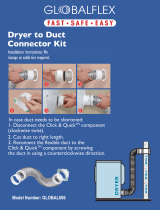 GLOBALFLEX Global006 Operating instructions
GLOBALFLEX Global006 Operating instructions
-
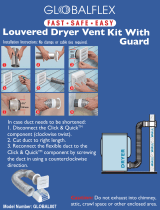 GLOBALFLEX Global007 Operating instructions
GLOBALFLEX Global007 Operating instructions
-
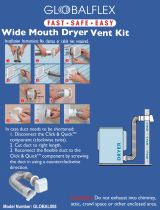 GLOBALFLEX Global008 Operating instructions
GLOBALFLEX Global008 Operating instructions
-
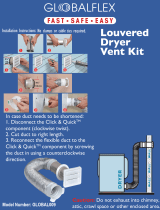 GLOBALFLEX Global009 Operating instructions
GLOBALFLEX Global009 Operating instructions
-
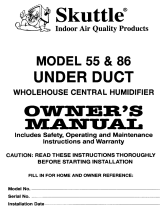 Skuttle 86 Owner's manual
Skuttle 86 Owner's manual
-
Air King AK4500 Owner's manual
-
Lasko 900L Owner's manual
-
Honeywell HE160A User manual
-
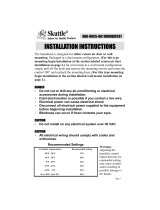 Skuttle Indoor Air Quality Products SK0-0055-001 User manual
Skuttle Indoor Air Quality Products SK0-0055-001 User manual
-
Carrier HUMCCLFP1025-A User manual


















